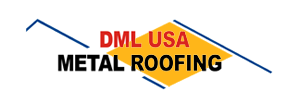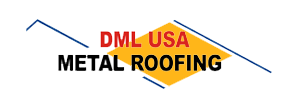Are metal roofs durable? Yes, they are renowned for their incredible durability and long lifespan. Here are some quick facts to keep in mind:
- Longevity: Metal roofs can last between 40 to 70 years, far outlasting traditional shingles.
- Durability: They resist cracking, corroding, and stand strong against wind gusts up to 140 mph.
- Energy Efficiency: By reflecting solar heat, metal roofs can lower cooling costs by up to 40%.
- Environmental Impact: Metal roofs are eco-friendly, being largely recyclable at the end of their lifespan.
When home improvement decisions significantly impact your property’s value and maintenance demands, a metal roof stands out as a forward-thinking investment. It’s not just about enduring the elements but also about enhancing energy efficiency and sustainability.
I’m Adam Kadziola, and with over a decade of experience at DML USA Metal Roofing, I’ve seen how our metal roofs not only withstand the harshest conditions but also improve energy efficiency. Transitioning to more eco-friendly and durable roofing options has been my focus, benefiting both homeowners and the environment.

Are Metal Roofs Durable?
Longevity of Metal Roofs
Metal roofs are known for their impressive lifespan, often lasting between 40 to 80 years. This longevity is much greater than traditional asphalt shingles, which typically last only 12 to 20 years.

One of the reasons metal roofs last so long is because they require minimal maintenance. Regular inspections and basic upkeep can keep these roofs in excellent condition for decades.
Strength and Impact Resistance
Metal roofs are built to withstand extreme weather conditions. They can handle wind gusts up to 140 miles per hour, making them an excellent choice for areas prone to hurricanes or strong storms.
Hail resistance is another strong point for metal roofs. While heavy hail can dent some surfaces, many metal roofing products have the highest impact resistance ratings. This means they can take a beating without compromising their integrity.
In addition to wind and hail, metal roofs resist cracking and corroding, providing homeowners with peace of mind during severe weather events.

Overall, the durability of metal roofs makes them a smart investment for those looking to protect their home from the elements while minimizing long-term maintenance and repair costs.
Next, we’ll explore the various benefits of metal roofs, including their energy efficiency and environmental impact.
Benefits of Metal Roofs
Energy Efficiency
Metal roofs are champions when it comes to energy efficiency. They have a natural ability to reflect solar radiation, which means they keep your home cooler during hot months. This solar reflection can lead to significant energy savings, with some studies showing up to a 40% reduction in cooling costs.
Not only do metal roofs reflect heat, but they also re-emit absorbed solar energy quickly, which helps in maintaining a comfortable indoor temperature. This makes them an ideal choice for homeowners looking to cut down on energy bills.
Environmental Impact
Choosing a metal roof is a step toward reducing your environmental footprint. Metal roofing materials often contain a high percentage of recyclable materials. At the end of their long life, these roofs can be entirely recycled, which helps in reducing waste that would otherwise end up in landfills.
By opting for a metal roof, you’re not just investing in your home, but also in a more sustainable future. This aligns with the growing trend of eco-friendly building practices that aim to minimize environmental impact.
Fire and Weather Resistance
Metal roofs boast a Class A fire rating, the highest available. This means they are noncombustible and provide excellent protection against fire hazards. For homes in wildfire-prone areas, a metal roof can be a crucial safety feature.
In terms of weather resilience, metal roofs are built to withstand the toughest conditions. From heavy snow to torrential rains, metal roofs shed elements easily, preventing issues like ice dams and water leaks. This resilience not only protects your home but can also lead to lower insurance premiums due to the reduced risk of damage.
These benefits make metal roofs a compelling choice for homeowners seeking a durable, efficient, and environmentally responsible roofing solution.
Next, we’ll dig into some potential drawbacks of metal roofs, such as cost and noise considerations.
Drawbacks of Metal Roofs
While metal roofs offer many benefits, there are some drawbacks you should consider before making an investment.
Cost Considerations
The initial investment for a metal roof can be quite high. Prices typically range from $5,670 to $17,350, depending on the material and size of your roof. High-end options, like copper, can cost even more. In comparison, a traditional asphalt shingle roof averages around $8,800.
However, it’s important to weigh these upfront costs against the long-term savings. Metal roofs can last 40 to 80 years with minimal maintenance, far outlasting typical asphalt shingles. Over time, the durability and energy efficiency of metal roofs can offset the initial expense.
Noise and Insulation
One common concern with metal roofs is noise, especially during storms. The sound of rain or hail can be louder on a metal roof compared to other materials. Some homeowners find this sound soothing, while others may find it disruptive.
To address this, proper insulation solutions are key. An experienced roofer can install a solid underlayment that helps dampen noise, making your home quieter during bad weather.
Expansion and Contraction
Metal roofs can expand and contract with temperature changes. This natural movement can lead to issues like fastener loosening and panel warping if not properly installed.
Regular maintenance is essential to ensure the longevity of your metal roof. Checking and tightening fasteners and inspecting for any signs of wear can help prevent problems related to expansion and contraction.
In the next section, we’ll answer some frequently asked questions about metal roofs, including myths about lightning attraction and concerns about denting.
Frequently Asked Questions about Metal Roofs
Do Metal Roofs Attract Lightning?
A common myth is that metal roofs attract lightning. In reality, metal roofs do not increase the likelihood of a lightning strike. Metal is a good conductor of electricity, meaning if lightning were to strike, the metal roof would safely disperse the electricity throughout the structure and into the ground, reducing the risk of fire or structural damage.
Can Metal Roofs Dent?
While metal roofs are known for their durability, they can still dent under certain conditions. Material differences play a crucial role in dent resistance. For instance, steel roofs are highly resistant to dents, while softer metals like aluminum and copper can be more prone to damage from hail or falling debris.
To prevent dents, consider choosing a thicker gauge metal and ensure proper installation by a skilled contractor. Additionally, some metal roofs come with protective coatings that can help minimize the risk of surface damage.
Are Metal Roofs Noisy?
Noise is a common concern for those considering a metal roof. During storms, the sound of rain or hail can be more pronounced on metal compared to other materials. However, this doesn’t mean your home will be noisy. Proper insulation options can significantly reduce noise levels. Installing a quality underlayment or adding insulation in the attic can help keep your home quiet, even during heavy rain or hailstorms.
By addressing these common questions, you can better understand the benefits and potential challenges of choosing a metal roof for your home. Next, we’ll explore the many benefits of metal roofs, including their energy efficiency and environmental impact.
Conclusion
Choosing a metal roof, especially from DML USA Metal Roofing, is a decision that brings numerous benefits to your home. If you’re asking, “are metal roofs durable?”, the answer is a resounding yes. Metal roofs are built to last, offering a lifespan of 40 to 80 years with minimal maintenance. They can withstand extreme weather conditions, from high winds to heavy snowfall, thanks to their impressive strength and impact resistance.
Investing in a metal roof is not just about durability, though. It’s also about making a smart financial decision. While the initial cost might be higher than traditional roofing materials, the long-term savings are undeniable. Metal roofs can lead to lower energy bills due to their energy efficiency, reflecting solar heat and keeping your home cooler during hot months. Plus, they are made from recyclable materials, reducing environmental waste and contributing to a more sustainable future.
Moreover, metal roofs offer a Class A fire rating, which is the highest level of fire resistance. This means your home is better protected against fire hazards, giving you peace of mind.
In summary, a metal roof from DML USA Metal Roofing is a durable choice that improves the value and safety of your home. It’s an investment that pays off in longevity, energy savings, and environmental benefits. So, when you’re ready to upgrade your roof, consider the many advantages a metal roof can offer.

